Affirmative Action began as a plan to equalize the educational, employment, and contracting opportunities for minorities and women with opportunities given to their white, male counterparts. The policy was born of the Civil Rights Act of 1964, President Lyndon B. Johnson’s executive order 11246, and the Equal Protection Clause of the 14th Amendment to the U.S. Constitution. In its 40-year history, Affirmative Action has attempted to rid America of discrimination against minorities and women, sometimes at the cost of what has been labeled “reverse discrimination” towards white men. Such race-conscious Affirmative Action programs have been the source of much controversy and sometimes violent protests.
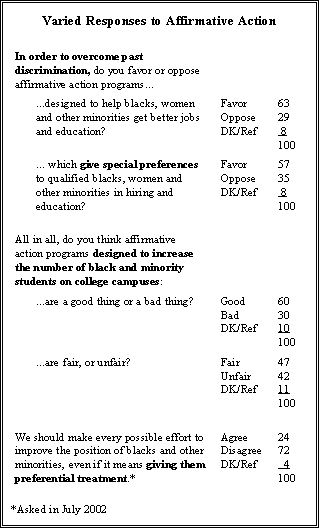 What Affirmative Action is and its Applicability
What Affirmative Action is and its Applicability
In its original form, minorities and women were to receive “special consideration” in determining entrance to universities, employment hiring, and receiving federal contracts when competing with equally qualified white males.
Race-conscious affirmative action programs are subject to review under Title VII of the Civil Rights Act of 1964, if practiced by private or public employers and unions, Title VI if practiced by state or private recipients of federal funds, and the Equal Protection Clause of the 14th Amendment, if practiced by governmental agencies.
Private Sector
In the private sector, Johnson’s Executive Order 11246 gave Secretary of Labor Willard A. Wirtz authority to formulate rules requiring federal contractors to take “affirmative action” towards eliminating discrimination after 1965. At the same time, the Civil Rights Act was being enforced by the federal courts against discriminatory companies, unions, and other institutions. The Department of Labor worked with the construction industry to establish a series of region-wide “plans” for numerical hiring goals. Through those contractor commitments, the department also could indirectly pressure labor unions, who supplied the employees at job sites, to create more ethnically balanced work crews.
One key case in understanding the Civil Rights Act and its intentions was the Griggs v. Duke Power Company case of 1971. That case held that not only is intentional racial discrimination prohibited, but also hiring and employment policies that have perpetuated the effects of past discrimination. In addition, arbitrary blocks against the employment and advancement of black employees that were unintentional are prohibited and to be removed by private employers. In the Griggs case, black plaintiffs disputed Duke Power Company’s requirement that job applicants pass a general academic test of their abilities for its higher-waged jobs. It was found that test results could not predict the applicant's actual job performance. Further, it discriminated against black applicants who, due to a history of inadequate education in racially segregated schools, would more likely fail the test than their white counterparts. The ruling against Duke revolutionized the Civil Rights Act's enforcement by shifting the focus away from intent and toward a "disparate impact" standard. The standard holds that it is not always possible to recognize those who would have been hired under employment practices that perpetuate racial exclusion. It established that companies failing to employ a workforce that reflected the racial makeup of the "local, qualified" labor force, were in violation of the act. It also set a precedent for outcome-oriented Affirmative Action policies.
Universities
At the university level, institutions were required to assemble a more diverse student population by establishing “goals” and “timetables" for “full utilization” of educational opportunities for minorities and women, by way of directives from the Department of Health, Education, and Welfare. Prior to the fall of 1972, universities had not given racial nor ethnic integration a top priority in awarding admission to their learning institutions. Since there were so few racial and ethnic minority students who received a Ph.D. each year, faculty jobs were hardly affected by these changes, although increasing numbers of women were receiving Ph.D.s. With the Secretary of Labor’s Revised Order No. 4, universities were required to perform more diligent searches to find equally-qualified minority and women Ph.D. professors. At the same time, Anglo-American philosophy began to change from an indirect treatment of moral and political questions having to do with justice, to actually stating their views.
Two political articles published in 1971, A Theory of Justice by John Rawls, and Philosophy and Public Affairs by Princeton University, along with Florida State University’s Ethics, triggered an explosion of socially and politically engaged philosophical writings. Thus the debate over the legitimacy of Affirmative Action began on university campuses throughout the country, while those institutions were forced to exercise racial and gender preferences in their selection processes.
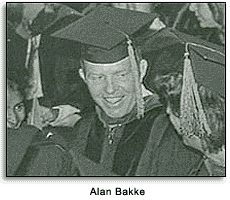 The debate over whether or not “goals” and “timetables” were identical to “quotas” and coercion to end discrimination, also began to heat up in American court systems as more cases were presented for its determination. One such case involved Alan Bakke, who had been denied admission to the University of California at Davis Medical School in 1979. The Supreme Court ruled, in Regents of the University of California v. Bakke, that explicit quotas violated the Equal Protection Clause. They did, however, find it legal to use race as one of many other factors in determining admissions to universities, using informal targets for minority admissions rather than strict quotas.
The debate over whether or not “goals” and “timetables” were identical to “quotas” and coercion to end discrimination, also began to heat up in American court systems as more cases were presented for its determination. One such case involved Alan Bakke, who had been denied admission to the University of California at Davis Medical School in 1979. The Supreme Court ruled, in Regents of the University of California v. Bakke, that explicit quotas violated the Equal Protection Clause. They did, however, find it legal to use race as one of many other factors in determining admissions to universities, using informal targets for minority admissions rather than strict quotas.
Two differing opinions were written in the Bakke case. While both agreed that universities may use race-based affirmative action practices for admissions, they could not agree on the fundamental reasons to account for them. According to Justice Lewis Powell’s now-famous opinion, those practices could be used to enhance educational diversity, but that the following stipulations must be observed in those systems: Racial quotas were not permitted; there must be a common admission standard by which all students are evaluated; and race can only be considered a “plus” factor and be on par with “a range of factors a university may properly consider in attaining the goal of a heterogeneous student body." Four other justices, led by Justice Harry Blackmun, agreed with Powell, but differed in his opinion regarding diversity. The four justices believed that universities may engage in affirmative action practices to remedy discrimination in society, and that the legitimacy of those programs was to be measured by how swiftly society’s racial imbalance was corrected by those means. Powell disagreed, stating that a university’s “remedial” uses of race to determine admission was to be judged by constitutional or statutory violations of equal protection and anti-discrimination laws.
Although Justice Powell’s strict opinion in the Bakke case that any admission policy defined by race, or used numerical racial quotas would be deemed unconstitutional, by the mid-1980s, American universities used either one or both of those admission practices. Those practices began to fall apart in 1994 when the Supreme Court struck down the University of Maryland’s Banneker scholarship practice of awarding only to African-American students. Further disintegration occurred when the Court of Appeals for the Fifth Circuit struck down the University of Texas Law School’s admissions program, and the First Circuit struck down a Boston plan for assigning students by race for selective high schools in 1998.
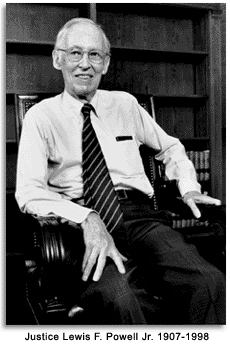 The slide continued until 2003, when the Supreme Court ruled for the University of Michigan Law School in the Grutter v. Bollinger case. Justice Sandra Day O'Connor's lead opinion declared: “Today we endorse Justice Powell's view that student body diversity is a compelling state interest that can justify the use of race in university admissions.” But there was no clearer road for diversity-inspired Affirmative Action programs to travel on in 2003 than there was in 1978.
The slide continued until 2003, when the Supreme Court ruled for the University of Michigan Law School in the Grutter v. Bollinger case. Justice Sandra Day O'Connor's lead opinion declared: “Today we endorse Justice Powell's view that student body diversity is a compelling state interest that can justify the use of race in university admissions.” But there was no clearer road for diversity-inspired Affirmative Action programs to travel on in 2003 than there was in 1978.
Contracting Businesses
Regarding private businesses that contract with the federal government, the Supreme Court held in Fullilove v. Klutznick of 1980 that federal funds should be set aside for a certain percentage of minority-owned businesses that are not involved in discriminatory practices. As in the Griggs case, those set-asides could not continue longer than the effects of the discrimination. In other words, the set-aside can be waived if “sufficiently qualified” minority contractors cannot be located, or that they charge higher prices for services without a reasonable explanation for those inflated costs, due to the present effects of prior discrimination or disadvantage. It also would provide a procedure to prevent non-disadvantaged, minority businesses from claiming the set-aside, and ensure that not too great a burden is placed on fault-free, non-minority businesses. But those innocent, non-minority businesses could be required to subcontract 10 percent of their business to minority businesses.
Since a number of decisions based on prohibiting the perpetuation of the effects of discrimination came after the Griggs case, the Supreme Court held that those practices performed prior to the Civil Rights Act were not illegal. Fullilove asserted that Congress has the same power over private parties (contracting businesses) that allows for regulating state action under Griggs-style disparate impact standards, even though Washington v. Davis does not directly allow such an action for private parties under the Equal Protection Clause. Justice Powell, agreeing with the Court's decision, held that in the Fullilove case, the set-aside is required and did meet the standards of strict scrutiny, but no other justices agreed on that account.
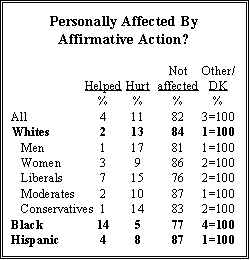 Federal Agencies
Federal Agencies
In the Washington v. Davis case of 1976, the Supreme Court determined that the federal government could not be held to the same disparate impact standard, under the due process clause of the Fifth Amendment, because private employers were under the Civil Rights Act. In that case, black plaintiffs sued the Washington, D.C., Police Department for using a screening test that disproportionately discriminated against disadvantaged black applicants who did not generally score as well on a test. It could not be proven effective in determining the capability of its applicants.
In more recent history, President Bill Clinton signed a direct order on July 19, 1995, avowing support of affirmative action, stating that all Affirmative Action programs be reviewed by cabinet secretaries and agency officials to determine if they met four tests. In an effort to bring the federal government into compliance with the recent Supreme Court ruling in the Adarand v. Pena case, Clinton stated that a program must be eliminated or reorganized if it: “creates a quota, creates preferences for unqualified individuals, creates reverse discrimination, and continues their program even after its equal opportunity purposes have been achieved.” The Adarand case held that higher legal standards for federal affirmative action programs must be met in order to be judged constitutional. It also stated, among other things, that race-generated programs must be narrowly tailored to reach their intended goal and serve a compelling government interest.
Opposition to Affirmative Action
One of the arguments against Affirmative Action was that preferences towards minorities and women produced the effect of “reverse discrimination” against white males. In the 1979 United Steelworkers of America, AFL-CIO-CLC v. Weber case, the Supreme Court ruled that the private sector could apply voluntary racial preference programs in hiring. Conservatives accused the high court of endorsing “reverse discrimination.” Many stated that employers and schools that favored women and minorities were committing the same injustice that the Jim Crow Laws had committed against blacks. On the other hand, others believed that a temporary imbalance in employment and higher learning institutions helped to counteract past injustices until racial, minority, and gender equality could be achieved.
In a backlash against Affirmative Action, President Ronald Reagan cut funding for the Equal Employment Opportunity Commission and the civil rights division of the Justice Department. Reagan believed that the government promoted reverse discrimination and stated that it should relax its efforts to reach employment equality on behalf of blacks and other minority groups. He also believed that compensating blacks and other minority groups for past discrimination with hiring quotas, numerical goals, and timetables, ought to be eliminated. As a result of those cuts, the EEOC filed 60 percent fewer cases by 1984 than it had at the beginning of the Reagan administration. Also, cases against segregation in schools or housing, prepared by the Justice Department, virtually disappeared.
In Support of Affirmative Action
An example of the policiy succeeding is the improvement of schooling for minorities. From 1960 to 1995, the percentage of blacks ages 25-29 who graduated from college rose from 5.4 percent to 15.4 percent. A survey performed in 1993 of 718 primary-care physicians from 51 California communities found a direct relation between the ethnic or race group and the physicians who served them. Increases in African-American and Hispanic physicians have paralleled a proportional rise in the quality of health care received in communities with higher concentrations of those minorities.
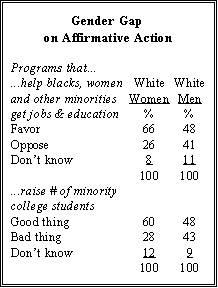 University of Michigan studies measuring the value of diversity in education have indicated that “patterns of racial segregation and separation historically rooted in our national life can be broken by diversity experiences in higher education.” Their empirical analysis also has shown that diversity produces “the greatest engagement in active thinking processes, growth in intellectual engagement and motivation, and growth in intellectual and academic skills” of those students. Involving students in more complex thinking — rather than automatic thinking — fosters increased alertness, an ability to develop new ideas and ways of processing information, and stimulates greater mental activity, all skills necessary in today’s more complex society.
University of Michigan studies measuring the value of diversity in education have indicated that “patterns of racial segregation and separation historically rooted in our national life can be broken by diversity experiences in higher education.” Their empirical analysis also has shown that diversity produces “the greatest engagement in active thinking processes, growth in intellectual engagement and motivation, and growth in intellectual and academic skills” of those students. Involving students in more complex thinking — rather than automatic thinking — fosters increased alertness, an ability to develop new ideas and ways of processing information, and stimulates greater mental activity, all skills necessary in today’s more complex society.
Many minorities and women continue to support Affirmative Action, but a growing number of them are admitting that the benefits may no longer be worth its side effect: the perception that their success is unearned. Overall, minorities and women continue to possess the vastly lower-paying jobs and are actively discriminated against in some sectors. By requiring corporations and contracting businesses to exercise special consideration for minorities and women in their hiring practices, the end result has sometimes been a less experienced or qualified workforce, resulting in a decreased ability to compete against less racially diverse corporations. In many cases, however, with increased training opportunities, those less qualified have proven to become as effective as those more skilled.
Conclusion
The debate over the need for, and type of, Affirmative Action practices continues today in the courts. Many contend that the effects it was attempting to achieve have not been accomplished. In the private sector, the debate also continues with white males accusing Affirmative Action of robbing them of promotions and other opportunities. Corporations continue to voice their concerns for overall effectiveness to compete against less racially diverse corporations. Has affirmative action come to the end of its lifespan of effectiveness? Will there be other measures taken to ensure a more racially and gender-balanced society?